We knew nothing about homesteading when we moved from the city to our new property. I’m honestly embarrassed to say we did no research other than watch dreamy homesteading videos on YouTube, had no prior skills or knowledge, and thought we would be living a much cheaper lifestyle. And while we weren’t technically wrong, we were a little misinformed on what it would look like to homestead, particularly with young children. When we began cultivating two acres of nice, green lawn for our homesteading dreams, we quickly realized that homesteading is not for the faint of heart, those lacking hands-on skills… or those without a lot of upfront cash when they are lacking said skills.
All of the homesteading experts we watched online while planning our move made everything look so easy and frugal. What we didn’t realize is they had a generational wealth of skills at their fingertips or years of hard work as a strong foundation that we still lacked. We quickly learned we needed some frugal tips for learning these skills and still achieving that homestead lifestyle we were craving. This empty lot needed building upon and we were the city folk for the job!
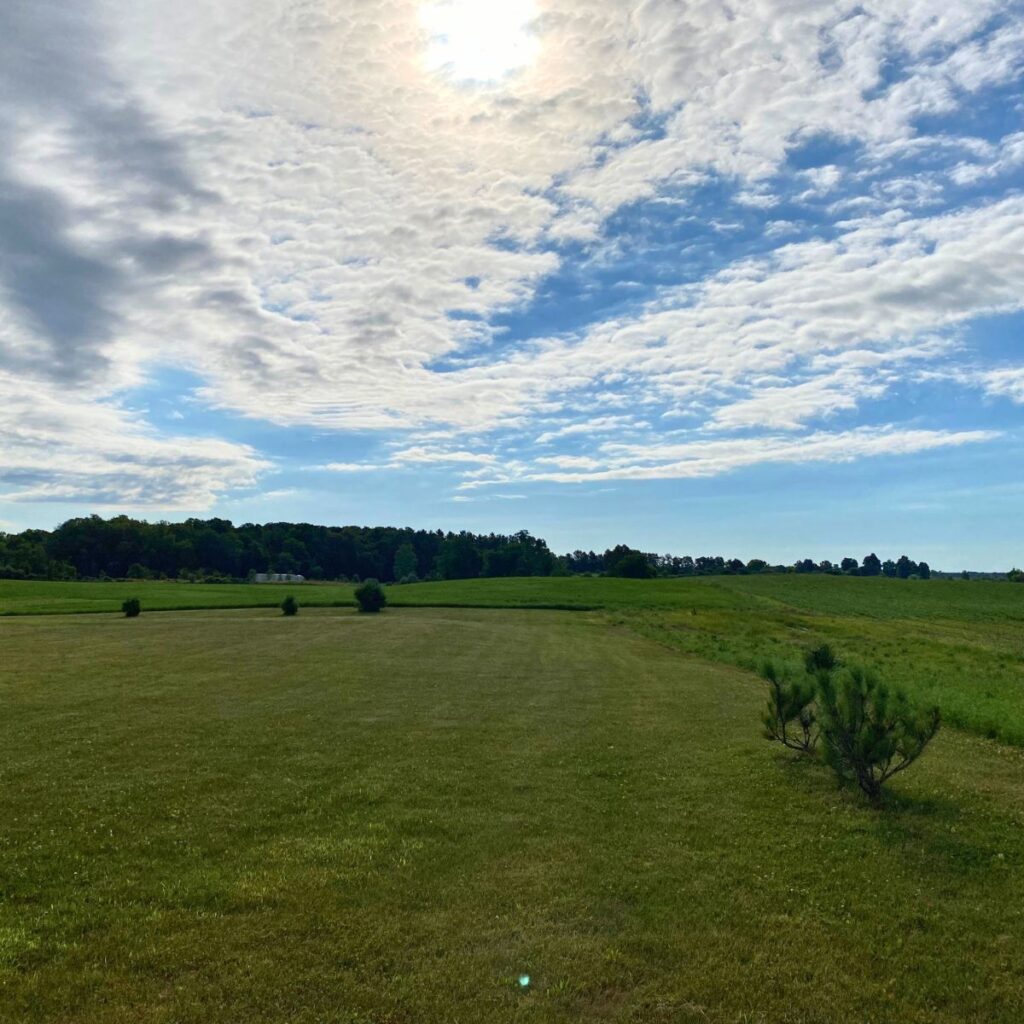
How did we continue to pursue our homesteading dreams with three young kids and little money in the bank? Well, to be honest, there isn’t a real clean answer or definitive path that we’ve taken. It has taken us two years to gain some skills and learn how to live a simple life on less while building more. There’s also been a lot of forks in the road and utter failures along the way. That is part of the reason why City Folk Homestead exists. I didn’t want others disillusioned by what they saw on social media to discourage them from continuing the fight toward their homesteading freedom.
Today, I’m so excited to get to share with you all of the things we’ve learned about having a frugal homestead with small children! I hope these tips equip you with more tools and encouragement to keep clawing your way toward your homesteading vision. But first, how did we get here? And where have we been the last two years? I’d like to take some time to share how our new homestead even came to be. I think some of you will be able to relate and others will simply be intrigued to know how others have the scales fall off of their eyes.

The backstory: how we lived in the city
We bought our first home a week before we got married. We were not concerned about financial independence or being debt free and honestly thought “frugal living” was just another synonym for being poor. We truly were city folk through and through, with all of the negative stereotypes. New vehicles we couldn’t afford and our date nights included spending time in all of the fancy stores in the city. We would spend hours brainstorming all of the ways we could make the monthly payments on new couches, TVs, and other products the modern world sells as necessities.
Thankfully we had a little house which curbed a lot of our spending. But we lacked discipline in telling ourselves “no” and still consumed every last penny we brought home. We didn’t just accumulate stuff, but experiences such as weekly trips to the zoo and children’s museum with our annual passes and other things that didn’t foster an environment where we learned who each other was as valuable members of our family. We were simply distracted together.
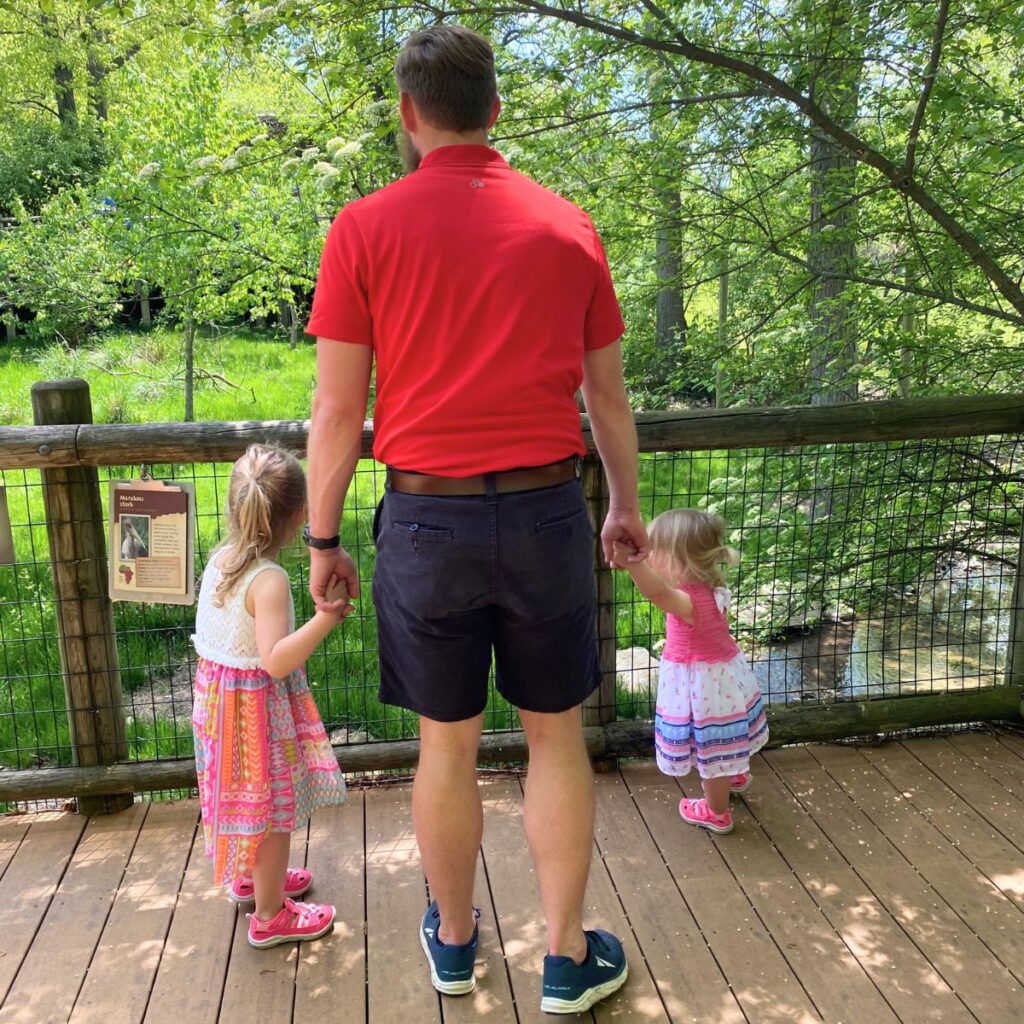
We didn’t always think city living was expensive. But the more our family grew and the less fulfilled we felt in our lives, the more we realized we were spending a lot on things that gave little in return. By the time we were ready to move, we were motivated to escape the excessive consumerism and buy-everything-on-credit culture. In the past, we bought into the “poor man’s mentality” that our tax return was free money to spend and as long as we could afford the payment, we could afford “it.” The $8,000 we loaned to the government free-of-charge throughout the year was now a license to do the things we denied ourselves throughout the year because we couldn’t afford to save up for it paycheck to paycheck. We bought the nice (to us) cars with a very long loan term simply to make the numbers work month-to-month.
In other words, we were broke. Not just in our finances, but also broken in our minds. The way we viewed money and our financial situation needed some serious rehab and we were finally beginning to see it. With two young children and another on the way, we were fed up. At least, we were really scared. Though our home was beautiful and we had a lot of great experiences, we were craving a more simple way of life. One in which we could lay down our heads at night and not have thoughts consumed with how we were going to make ends meet the upcoming month or how we would afford diapers for yet another child. (Because, you know, in the city, two kids is pretty much the standard. With three, in our current friend group, we were considered a little kooky).
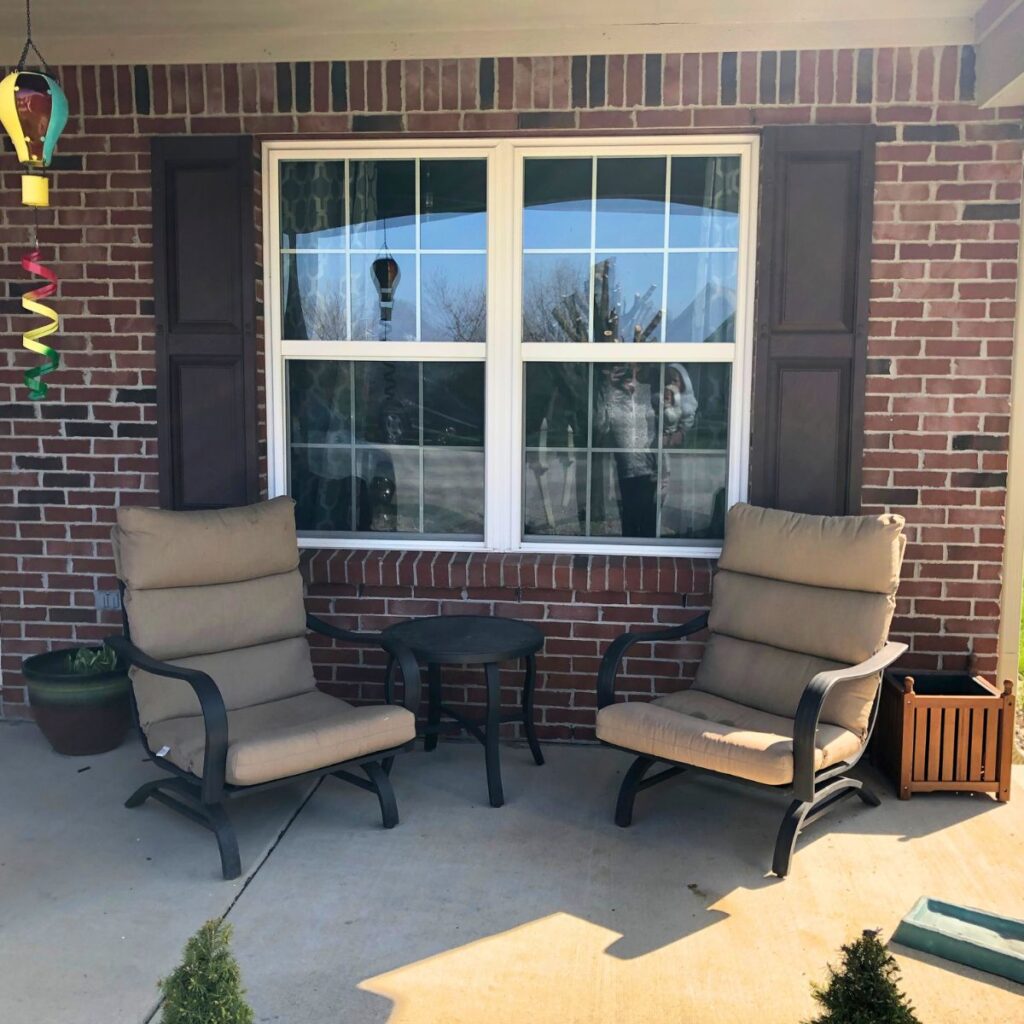
Though we had all of this stuff around us and experiences under our belt, we were miserable. We claimed to be Christians but sought fulfillment and wholeness through surrounding ourselves with things, not Christ. When I became pregnant with our first child, I was still set on being a career woman. But after six months of trying the career thing (and only bringing home a couple hundred dollars a month after childcare), we decided it was best I stayed at home.
My husband was working a fairly good paying job for us to live on one income (roughly $50,000 annually), but he didn’t have any hands-on skills we could fall back on if the social or economic landscape changed. After 2020, that worried him. A lot. Especially because we did not have any substantial savings and in the beginning of 2021 he was without a job for six months. That drained anything that we did have in the bank and now we felt like we were starting back at square one. We needed a very frugal lifestyle just to live in the city any longer. Otherwise, we would be slaves to the system of debt for the rest of our lives and our children’s after ours. What a terrifying thought.
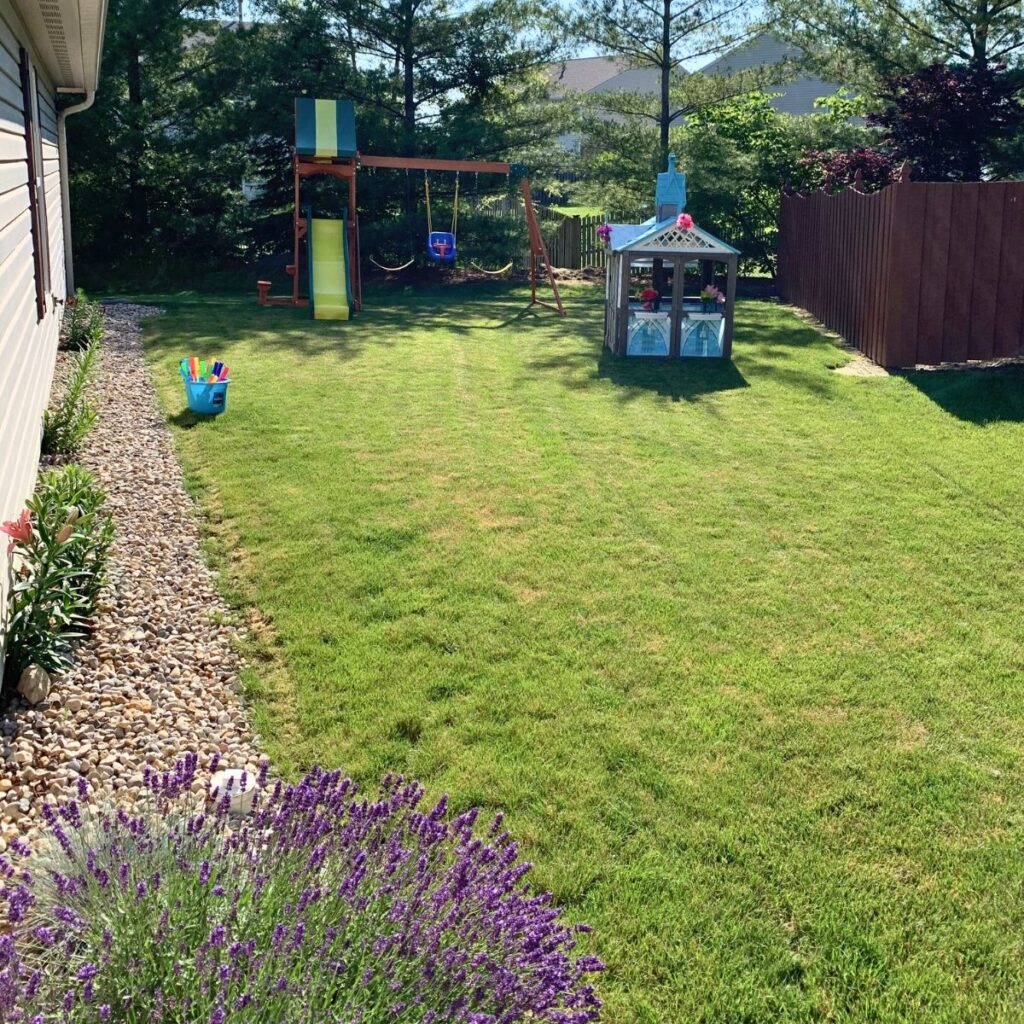
We decided we were going to make drastic changes for our family to become more self-sufficient and that relied heavily on us moving out of the city and finding land. We had huge dreams of chickens, goats, an overabundant garden, and fruit trees galore. This dream was so powerful it motivated us to put our house on the market and move hours away from the life we’ve always known in forty days.
There were a lot of things that were about to unravel that we never took the time to think through.
How we moved from the city to our new homestead & how we could afford it
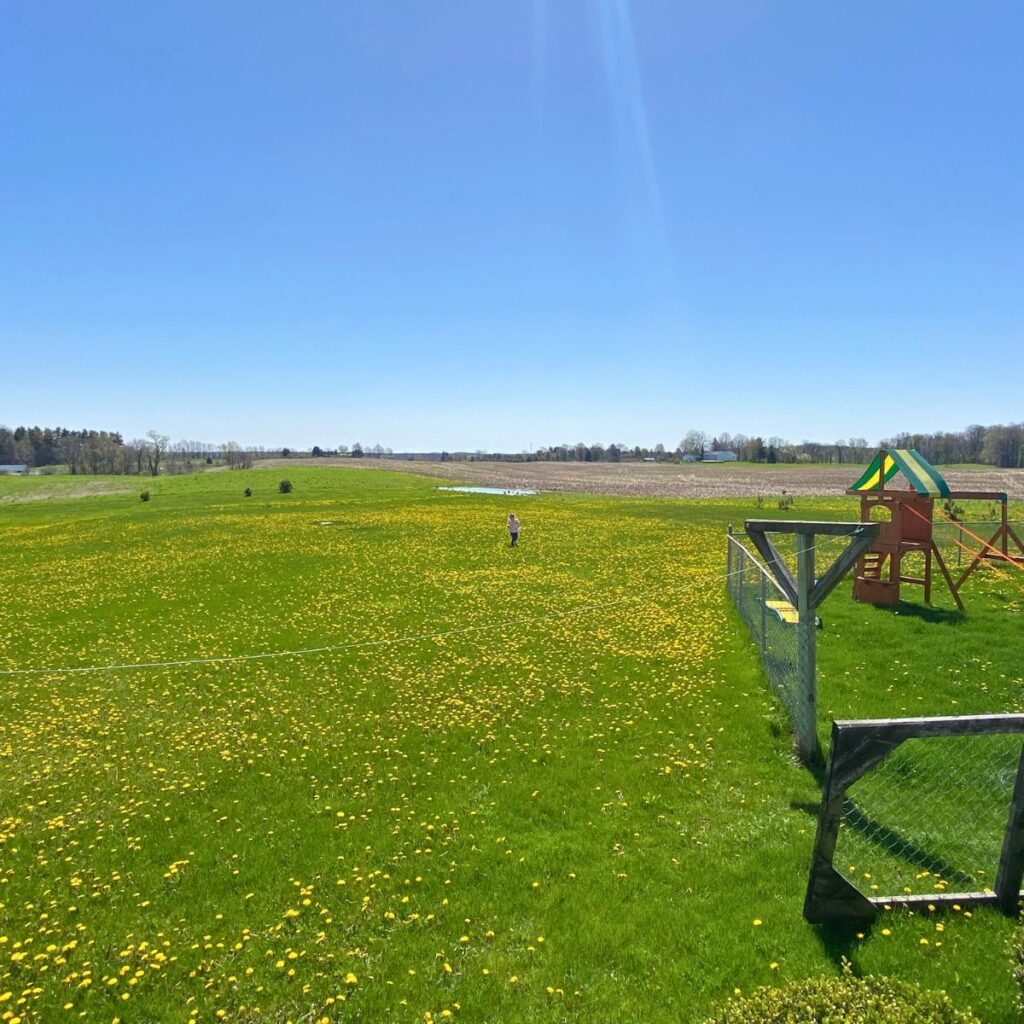
My husband found a job that was willing to train him in HVAC and plumbing. We put our house in the city on the market and in two days it was sold. That same day, I also found out I was pregnant with our third daughter. The next few months were a blur and filled with a lot of emotions and transitions. Finally, four months after living in my parents’ basement, we found the property we would call ours.
Once we moved to our new “homestead,” we realized we were using that term extremely loosely. We had two acres of big, green lawn, a couple of bushes, and endless possibilities. But we were going to have to make it happen ourselves with a new baby due and not much money to spend. There were also immediate needs in the house itself that required us to invest nearly $30,000 to re-plumb the entire house, get a new HVAC system inside and out, install a new well pump and water softener, rip out the flooring and replace with new, amongst many other things. In short, we’ve now been in the house two years and aside from the siding, foundation, and interior doors, this house is brand spanking new.
These indoor projects have taken a lot of our emotional, mental, and physical energy, our time, and our money. With three very young kids, I’m honestly kind of amazed at everything that has been accomplished in the last two years. But when we look at where the “homestead” stands, it still feels like we don’t have a ton to show for it. We are super proud of our chicken coop, though. And we will be proud of everything else that we do on the property because we are building it ourselves. The best part is we also get to do it alongside our kids and that’s a pretty special and unique experience that we will all carry with us the rest of our lives.
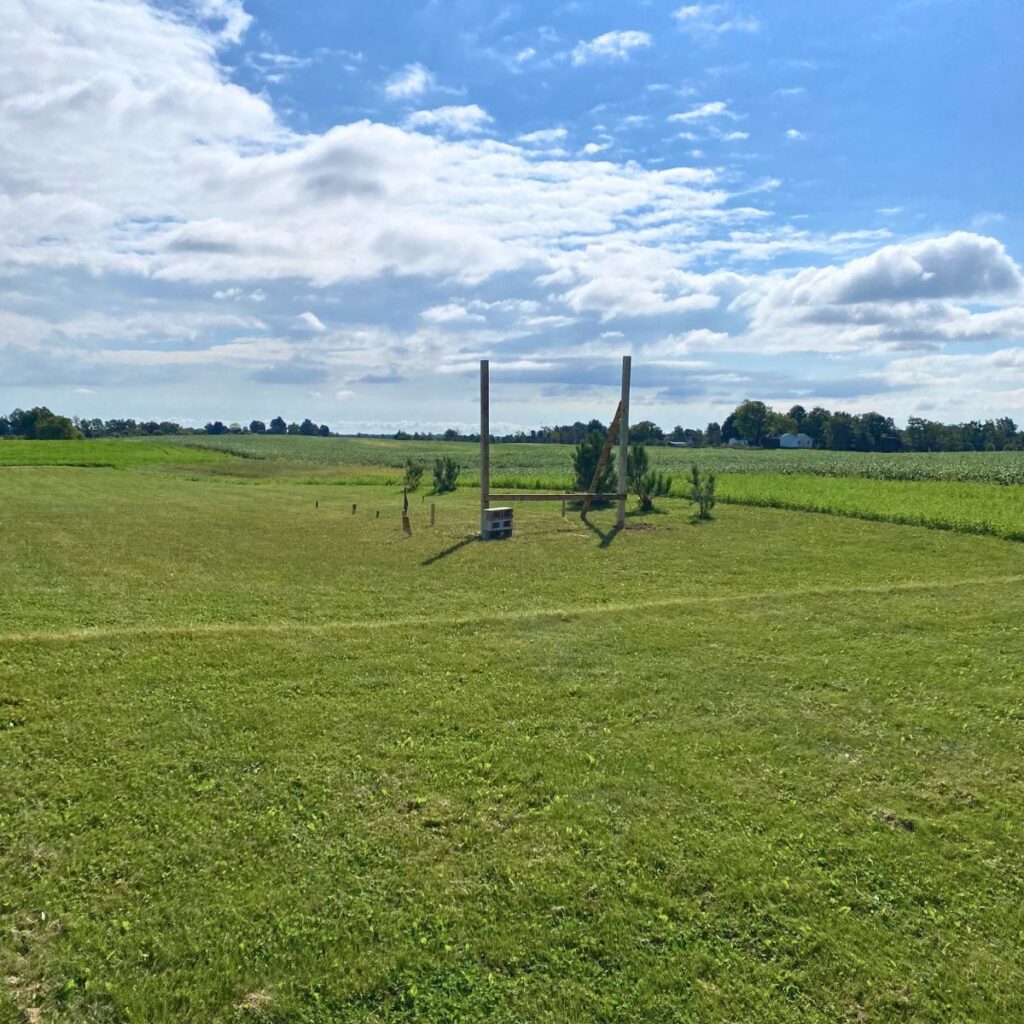
Where the homestead stands today
At the time of our move, our oldest was just about to turn four. All of the “practical advice” we had seen about starting a new homestead didn’t seem all that practical with zero foundational skills and not much time to dedicate to learning new things. We did build the greatest chicken coop ever to be seen from scratch in three weeks when we had an offer to take someone’s flock before they moved. Please note my absolute sarcasm but also know I am extremely proud of that thing. We are very thankful for that opportunity and love our chickens dearly and the family entertainment they provide.
But I still do not have a garden that produces our own food that I can scratch off the list while grocery shopping. Though I have learned a lot of grocery budget tips for a frugal homestead with young kids if you would like to read it here. The apple trees that we did plant ended up completely destroyed in a wind storm. I still don’t make sourdough bread because the idea of a sourdough starter intimidates me. Everything we seem to try does either fail or take more time, energy, and money than we anticipated. The pursuance of this simple life we dream of seems anything but simple. It certainly isn’t easy either and we have gone through many seasons of discouragement and excitement, anticipation and lack of hope.
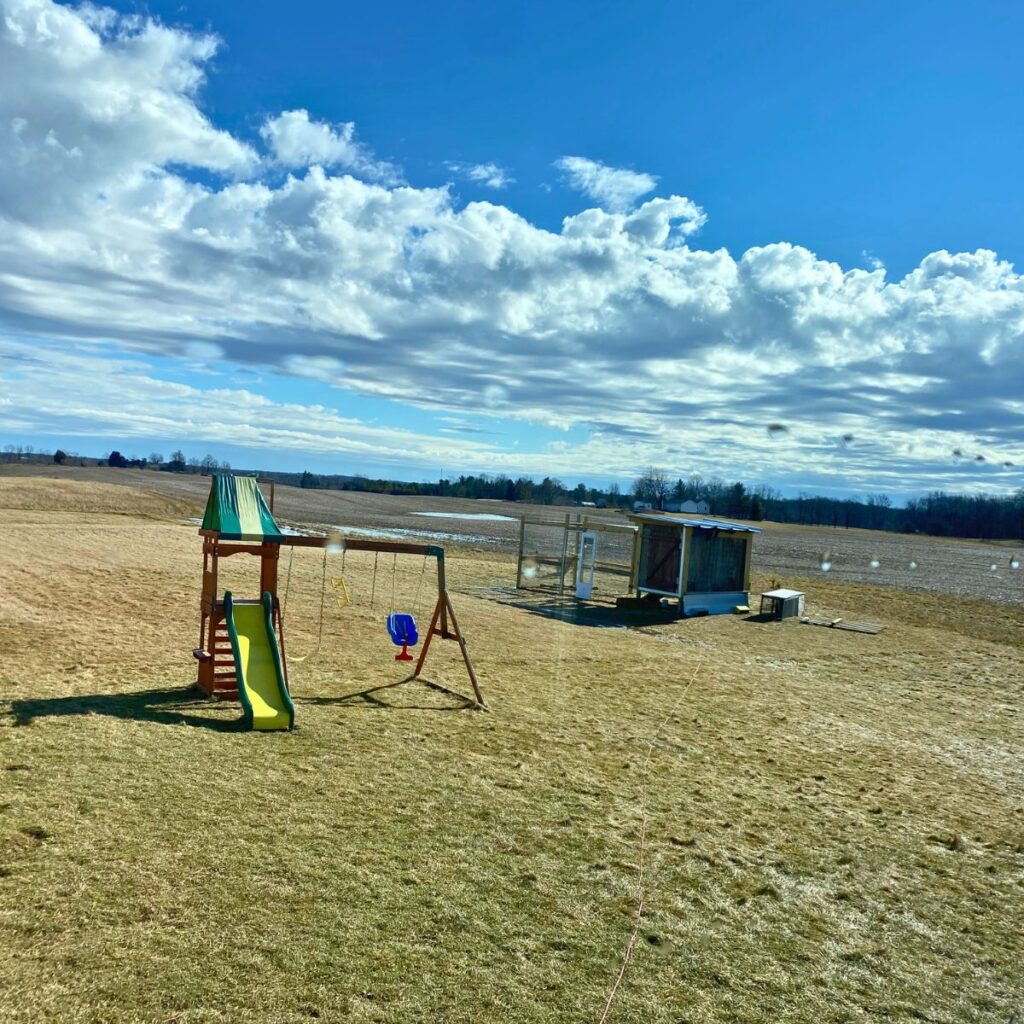
Though we are extremely proud of how we have grown in the last two years, the homesteading dreams have been put on hold a lot. Thankfully, that is not where our story ends. We do need to be realistic. Homesteading does take a lot of money to carve out this new way of life from city roots and zero foundation. It is a lifestyle that we are still learning how to incorporate into our current life stage. That is where City Folk Homestead was born and hope has been restored. We have a vision for our family, our new homestead, and this blog to build confidence in doing, give grace in failing, and serve with a joyful heart. If everything that we do falls back into one of those three categories, then we will find a reason to celebrate. There is a learning experience in pursuing the homestead dream that we are finally recognizing the fruit of.
All of that said, one question still stands. What are the ways we save money as a growing family while also pursuing our homesteading dreams? We can’t let the fear of failure win, but we also want to be good stewards of our finances and not waste our money on projects that are really more like an elaborate experiment. These are the tricks I’ve found to be a frugal new homesteader, with small children, while still accomplishing our dreams.
Building a strong foundation of skills is the first step
The outside of our homestead may not be what we dreamed, as the homesteading lifestyle isn’t as cheap or simple (in terms of time or physical energy) as we thought it was. Within our home and our family, though, is a bounty of great resources we did not have two years ago. Our young daughters are now involved in the kitchen and plan meals alongside me. Now we have less waste, because they are actually excited about the things that we eat even though the ingredients are more simple and healthier.
I have discovered alternative uses for a variety of things that would normally just end up in the trash pile. I’ve stretched our grocery budget by learning how to buy in bulk, cook at home and from scratch, and DIY store-bought products for much less. While we are trading in convenience, what we are gaining is health, simplicity, contentment, and confidence just to name a few.
We are learning, together as a family, the value of hard work. We are learning how to be resourceful, less wasteful, and more creative in the kitchen and around the homestead. This has led to a lot of contentment and sense of purpose as we feel fulfilled in our current responsibilities and accomplishments. We have also learned to be content with where we are and find joy and excitement in simple living. There is nothing better, as we’ve learned, than exploring God’s nature and wonder at His creation.

Ways we have grown in frugal homesteading in the last two years
Our first year on the homestead, we accomplished the following things:
- Built a chicken coop from scratch
- Learned how to reduce kitchen waste by giving scraps to the chickens instead of the garbage bin
- Bought a pressure canner and I learned how to make applesauce/apple butter, vegetable and chicken and beef broths, and chicken meat
- Created alternative uses for the canning scraps by making apple scrap vinegar as a household cleaner and gave the backyard chickens the leftovers from our kitchen projects
- Purchased our first quarter cow to cut down on meat at the grocery store
- Assisted friends in processing 80 meat chickens in two separate batches
- Implemented the cash envelope system to avoid using the credit card as often and pursue our dream of being completely debt free (including the mortgage) within the next ten years
Our second year on the homestead, we built upon our skills gained in year one and grew in these ways:
- I learned how to properly make our own bread from scratch (not sourdough, but I hope to learn in the coming year!)
- I sourced local tomatoes and peaches and canned those for the first time
- I experimented more with apple preservation and canned the most delicious apple slices and apple pie filling
- I am learning to cook at home so much more and from scratch, which really helps to plan meals that are healthier and more frugal
- I started making all household cleaners and other natural products, from laundry detergent to window cleaner using apple and peach scrap vinegar and my DIY citrus-scented vinegar using citrus peels sent from Florida by my grandma to perfumes and hand/body/face soaps
- My husband redid all of the plumbing in our house by himself and learned how to properly replace drywall
- My husband laid the flooring in our basement, put up the baseboard trim, and learned more advanced woodworking skills for additional household projects
- Our young children are learning essential life skills by being invited into the kitchen, learning how to build with their hands alongside Mom and Dad, and are daily exercising and developing new math and language skills
My best frugal tips as a new homesteader
Now that you know a good bit about our journey, you can hopefully appreciate our growth and rejoice with us in the ways we have been delivered from the things tormenting us in the city. This still didn’t cover how we are able to afford these homesteading projects with a growing family, though. Let me share with you the best ways I save money as a first-generation homesteader and homemaker with a family of five (soon-to-be six).
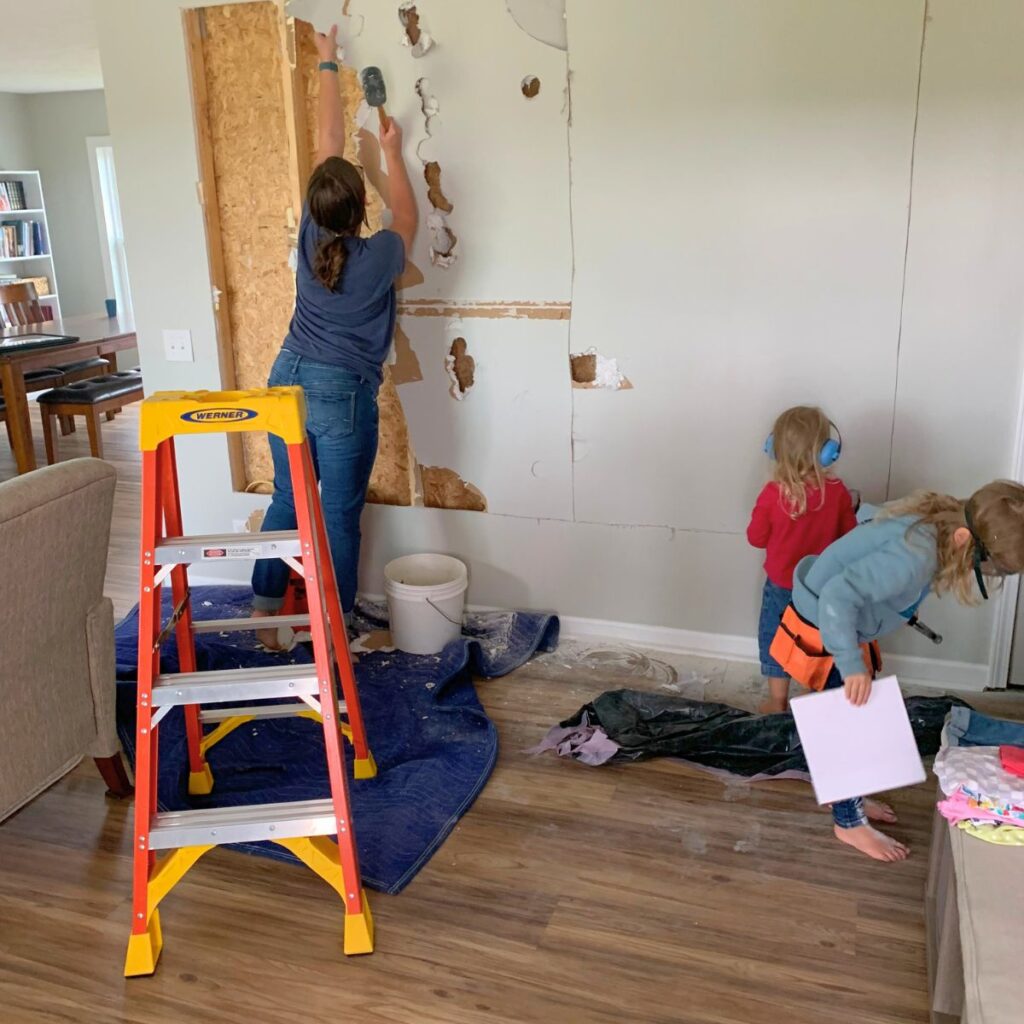
First, let’s define what it means to live a frugal homesteading lifestyle to us. A frugal homesteader looks for opportunities to reduce waste and capitalize on any investment. This means going back to the basics of the “using every part of the animal” mentality. This requires building in your tool belt a variety of skills and knowledge. If you are wanting to homestead but aren’t quite there yet or are new to homesteading and aren’t sure where to start, this is it. You need to be learning and accumulating in order to put into practice yourself what you see other homesteaders doing. This will come by trial and error, possibly some blood, and a lot of hard work, sweat, and maybe even tears. Don’t forget this, though: homesteading is 100% worth every bit of it.
Frugal Tip #1: Dispel the lies and misconceptions of homesteading because they will hold you back
There is a rich bounty of ideas for “affordable” DIY innovations and projects in homesteading circles. We looked at dozens of successful families online while preparing for our own homesteading adventures. When we finally moved and tried to implement their “simple living” strategies, however, it seemed all BUT simple to us. It was not “simple” for our wallet, nor was it “simple” to execute. We simply did not have the skills to do those seemingly small things at a low cost. We didn’t know how to accomplish the same things on our homestead because we were playing the comparison game and it was oranges to pickles.
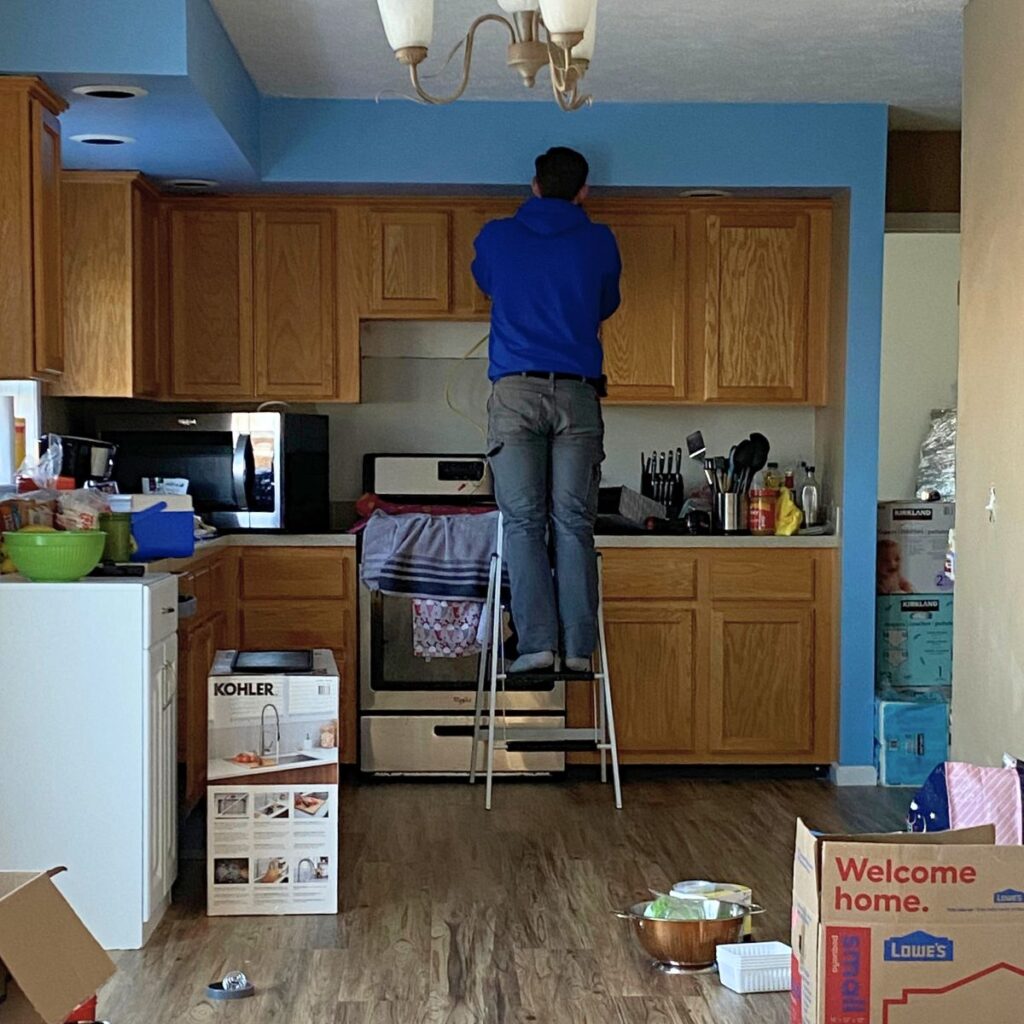
That said, while the list of “affordable ideas” is extensive (just look at Pinterest!), what we don’t realize is that homesteading isn’t necessarily a cheaper way of living until you have a foundation of skills and knowledge. It takes time to learn how to decrease your waste, increase your confidence to go ahead and try DIYing something new, and learn how to make something out of what you already have. This curbs the excessive consumerism mindset that “I can’t accomplish X until I have Y.” My husband used to like to do this with new tools, for example. I tried to do it with fancy kitchen gadgets or tools.
Over time, out of necessity, we have learned everything is marketed and there is usually a substitute that works just as well (if not better) already around your home or in your community’s network. Homesteading is an investment in essential and valuable life skills that will carry you through any situation over time.
I am also learning that homesteading does not necessarily require a ton of land or a small farm with a milk cow. You can start a frugal homestead in your current home, whether you live in a city apartment or on multiple acres or somewhere in between. Homesteading in today’s world means families can’t afford the 120 acres of farm field and already have a foundation of cooking from scratch basics. Therefore, we must start building the skills right where we are. We may move at a slower pace, but we are regaining an independence and confidence that many generations before us have been stripped of. And we will pass it on!
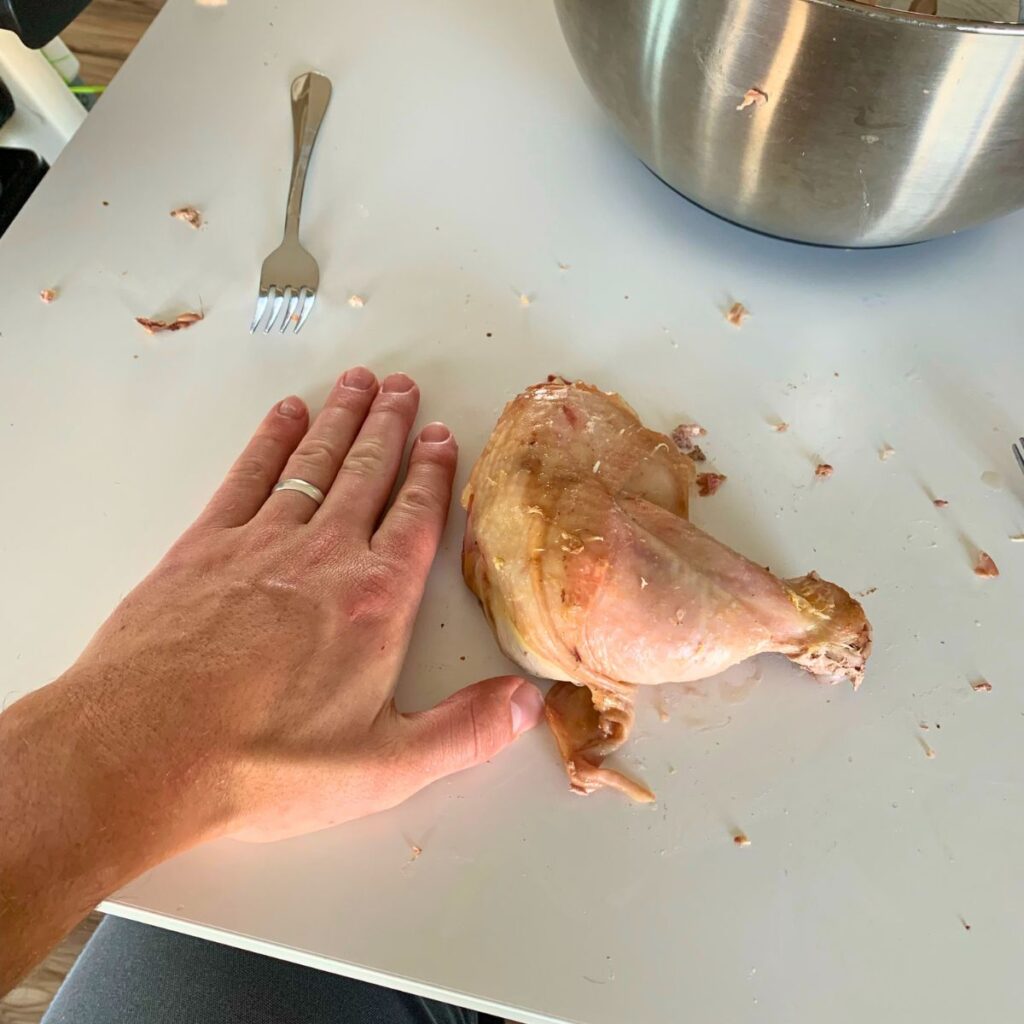
Frugal Tip #2: A solid homesteading community is extremely important and valuable – get involved as soon as possible!
Another great way to become established as a new homesteader is plugging into the homesteading community in your area. Homesteaders are not gate-keepers. We all want everyone to succeed because we see the value it brings to ourselves and others when we are more self-sufficient and capable. We are powerful when we are equipped with skills and knowledge that makes us more independent. We need as many as possible to equip the next generation to be less dependent on conveniences while sacrificing health.
We personally have made so many close friends in our homesteading community. They each have assisted us along this journey toward homestead living. Our friends and neighbors have introduced us to the care of different livestock, helped us to move our landscaping rock, taught me how to pressure can, hauled away all of our junk from the house renovation(s), walked us through how to process meat chickens, found us a free couch after a year and a half without one, and so much more. The greatest piece of advice I can give is start by asking questions and be genuinely interested in other people’s stories. We have been shocked by how helpful people are when we are simply humble enough to ask.
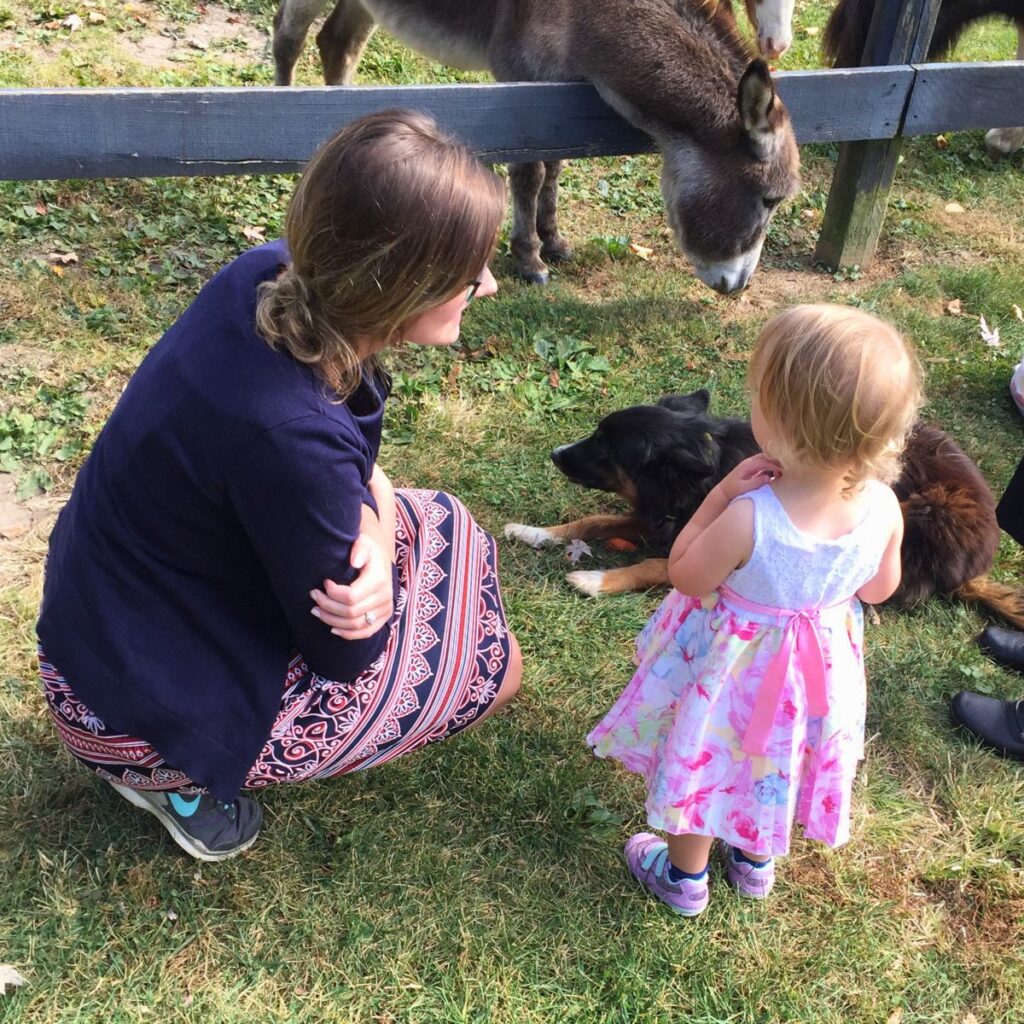
When we moved to our new homestead, we knew no one in the community. We started spreading our roots by connecting with people in our church and where my husband works. Your local 4-H office would be another great place to start learning new skills and meeting other homesteaders. Ours often will host classes and seminars on beekeeping, quilting, cooking lessons, and so much more. Lastly, we have also found a lot of great connections to farmers and other made-from-scratchers at our local farmers markets. We also gain a lot of great insight on how to execute certain things and what mistakes we should avoid when we open the door to communication.
In small communities, generally everyone knows somebody that does whatever you’re looking for more information on. Even just striking up a conversation in the grocery aisle or at the library will lead to amazing resources. Just put yourself out there and start gathering information!
Frugal Tip #3: DIY all-natural household products as needed, not all at once
We started on our all-natural household cleaner journey due to our daughter’s health issues. I soon recognized the benefit it has been to our wallet and appreciate the healthy, frugal alternatives I have come up with. I use my nontoxic vinegars for all of my household cleaning needs. Additionally, I have now replaced all of our hand, body, and face lotions and soaps, laundry detergent, dishwashing soap, and perfumes with natural DIY solutions.
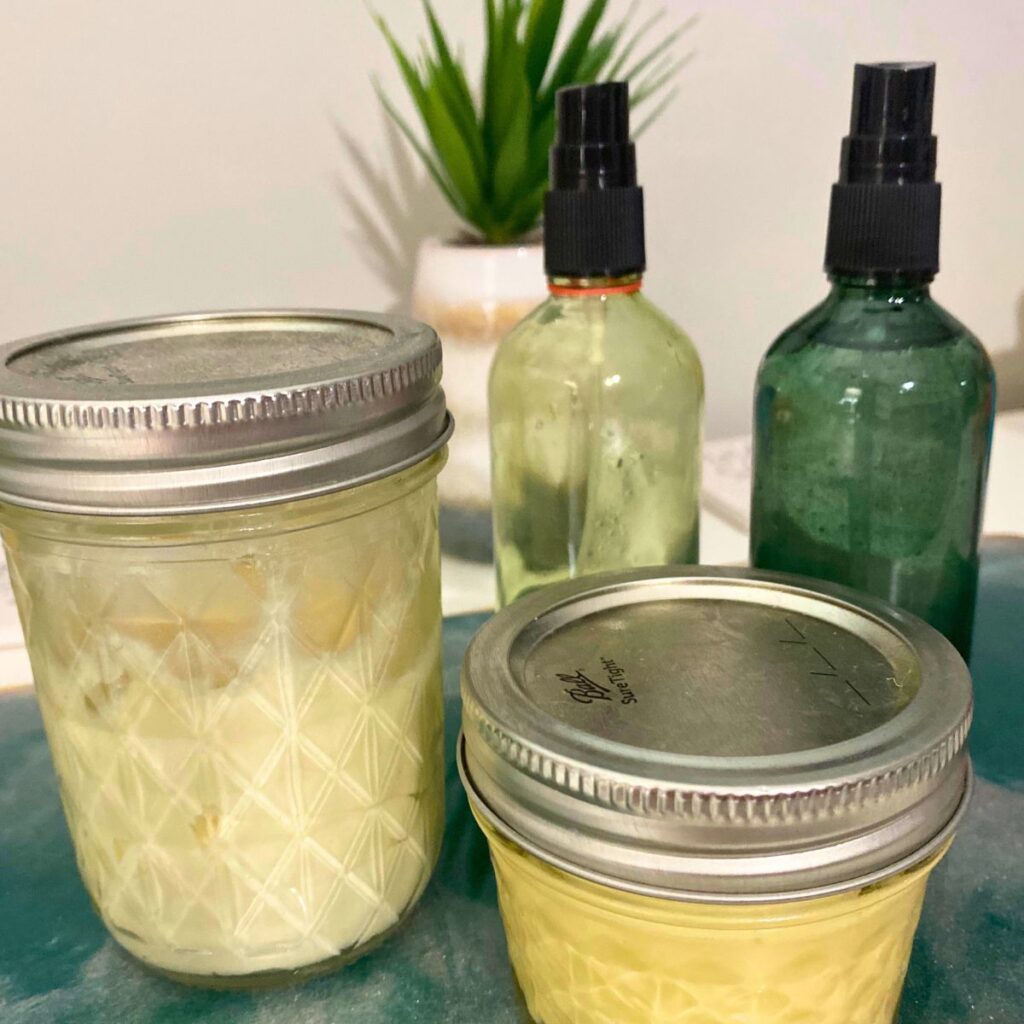
I was not able to accomplish this all overnight. It has literally taken two years as different store-bought products have run out and my bandwidth has increased to take on a new skill and maintenance. I am constantly having to check on our supply of different homemade goods because if we are getting low, there are sometimes multiple items I have to purchase and a large chunk of time to set aside (without children’s interruptions) to replenish our stock. I am certainly not complaining, but I do want to paint a realistic picture for those of us with small children. Nothing happens on our schedule and certainly not without disruption. It’s a natural part of the season we are in, but sometimes I do need to have someone come watch the children!
The way I make our soap is by seriously diluting Dr. Bronner’s Castile soap with water. That’s it. It makes a nice foaming hand soap I use in recycled Bath and Body Works dispensers. I use it on my face, body, hands, and I even use it in the kitchen to clean our dishes when I’m washing by hand.
Until I get my own posts up on the other frugal substitutes, please check out these awesome tutorials below on how to make your own household products:
Three Ingredient Laundry Powder from Texas Homesteader
How To Make Dishwasher Powder At Home from Homestead How-To
Homemade Lotion from Dr. Axe (I make my own scents but the lotion base is great)
As for the perfume, I simply take a small glass spray bottle and fill with water from my fridge. Then I pick whatever scent I’m into and add a few drops of essential oils and ta-da! A wonderful, nontoxic spray that can be used on my clothes, linens, or even on a wool ball in the dryer to replace dryer sheets.
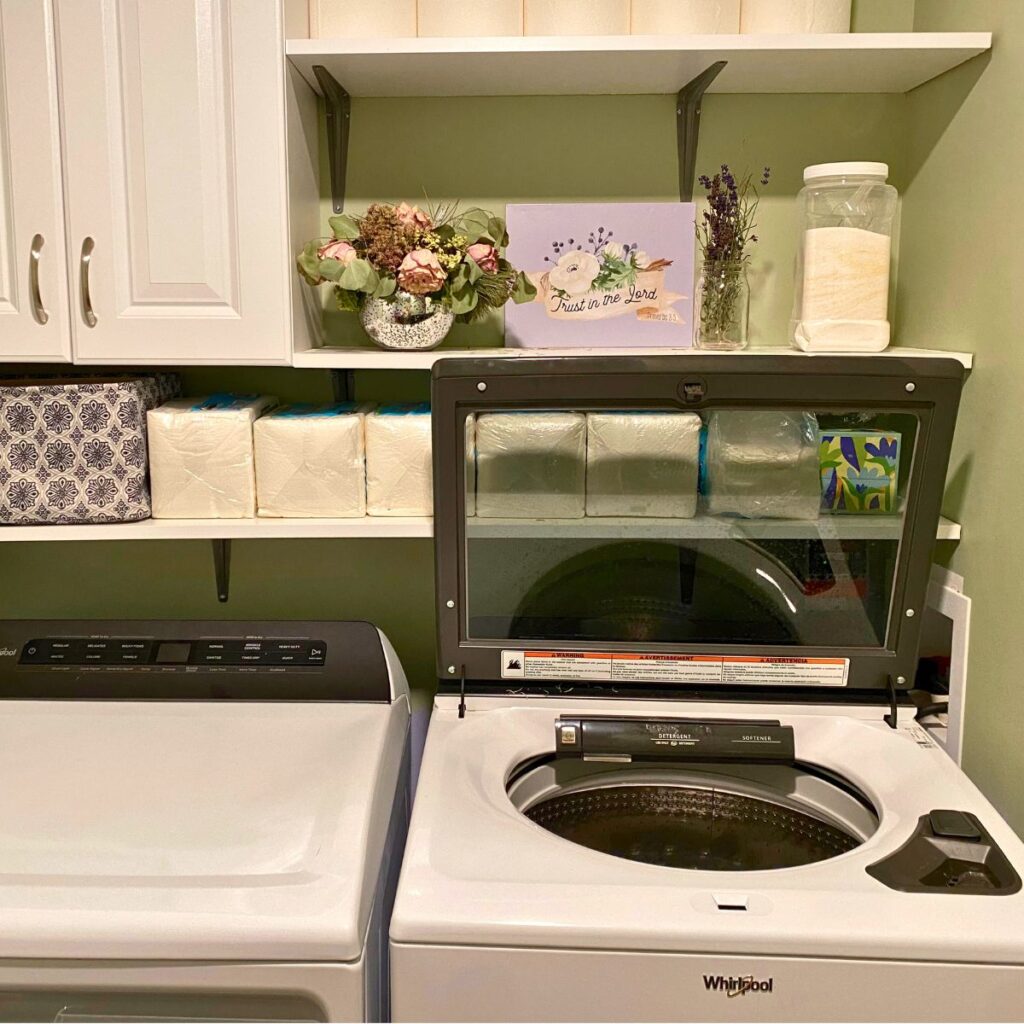
All of these substitutes will ultimately save you money on the homestead and create a healthier environment for you and your family. These ideas are all made naturally and are nontoxic and can be made for pennies on the dollar. None of this can be said about their store-bought counterparts.
Frugal Tip #4: Use dried flowers as home decorations
As you can see in the picture above, I spent time this past fall cutting lavender out of our rock landscape garden to use as home decoration. In order to get them to stand up straight, I hung them upside down to dry by tying sewing thread around them and creating an upside down bouquet. A month after cutting and I knew they were sufficiently dried out, I was able to put them in a glass mason jar and use as a beautiful dried flower arrangement on my laundry room shelf. This is also a great way to recycle old canning jars that have nicks on them and can no longer be used for food preservation.
The other dried flowers in this picture are from the funeral of a family member. I didn’t exactly intend to turn them into a dried flower decoration, and although they kind of droop down, for now I think they are still a pretty compliment to the rest of the shelf.
Frugal tips for completing homesteading projects
The way we brought chickens onto our property was a pretty chaotic one. We mentioned to some friends that we eventually wanted chickens and they had family members who were moving and wanted to get rid of theirs. In three weeks. We had no chicken coop, no experience raising chickens, and very little funds. Immediately we got to work on sketching out the chicken coop build and sourcing materials.

It was a total “God thing” that another one of our friends knew a guy who was getting rid of some old wood fencing and pallets. Great. Now all we needed was lumber for the posts and frame, the metal roofing (which we also scored for free), and hardware cloth for the run.
At this point we knew we would sacrifice “aesthetics” and “perfection” for practicality, functionality, and timeliness. While we don’t have the beautiful and easily accessible nesting boxes laid with fresh herbs or an entryway to our coop outfitted with pictures and funny sayings, we have a coop that houses our entire backyard flock (with room to add more) and plenty of fresh eggs to use for our family’s needs and gift generously to others. In the end, we are extremely satisfied for what we were able to accomplish on a budget. Sometimes it’s more about the experience through the process than it is the “picture-perfect” outcome, especially when living a frugal/debt-free lifestyle.
Ultimately we were able to complete the 26ft by 8ft run and 6ft by 8ft coop in three weeks with an investment of around $1,200. This included the furnishing of the inside of the coop with two roosting ladders and the wood shaving bedding. If you have looked at pre-assembled chicken coops at your local farm store, you know that is an incredible price for such a large coop.
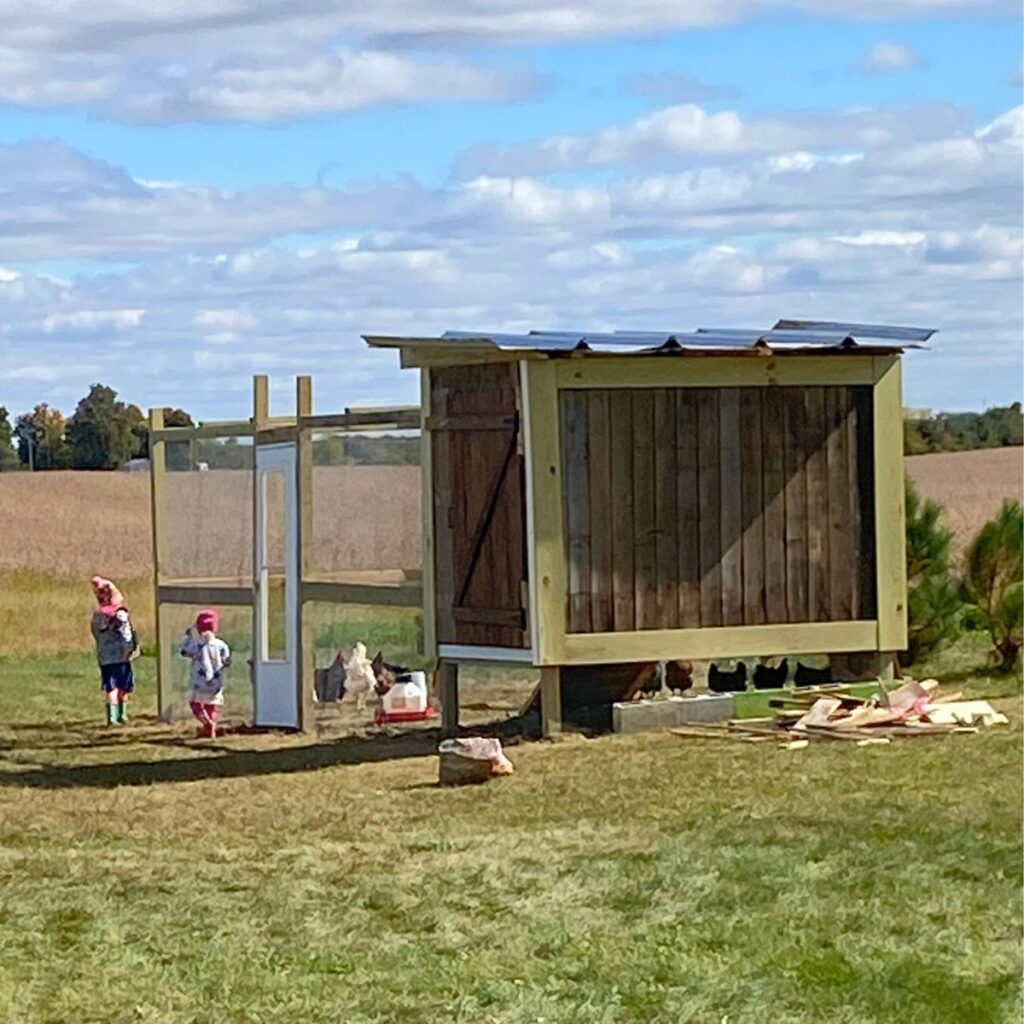
We also did this with little to no experience of building something with our own hands. My husband took some woodworking classes in high school, but neither of us would have ever dreamed in the city we could build something of such size and magnitude on our own before. Every time I look outside I am dang proud of what we accomplished together as a team. Even if it doesn’t have a chandelier or feminine aesthetic. When our kids’ play set and apple trees were destroyed last spring in a wind storm but that chicken coop stood firm and strong, we were smiling from ear to ear.
DIY & low-cost ways to entertain the children on a budget
Of course what would this post on frugality be without mentioning our kids. When we first moved from the city, it was not cheap entertaining our children. We were still used to living the city life and using city means to entertain them, which was not as easily timed or budgeted when the nearest zoo or museum was an hour away. It was simply not sustainable any longer for us to have the annual membership passes or to try finding things to do off of the homestead. The small town we live in doesn’t have much to do other than a park and there’s too much work to do at home to spend every day away from it.
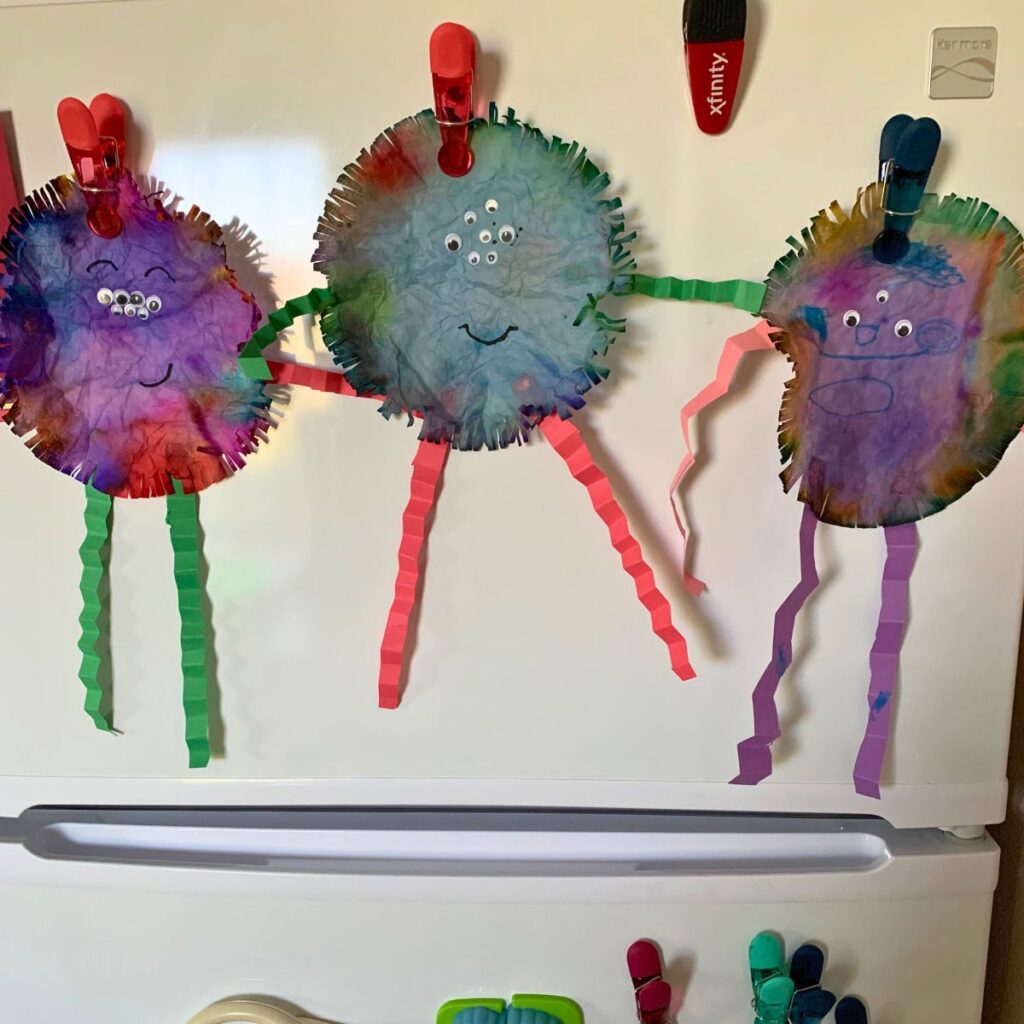
Not only do we homestead, but as the homemaker, I strive to create a home-centered natural daily rhythm. I no longer look for excuses to leave our home and often spend a week at a time here without getting into the car at all. I have found a lot of freedom and peace in taking control of our routine and actually enjoying being a homebody. But it has taken a lot of work and effort and sometimes the children do still struggle with this change of pace. Sometimes I don’t have the energy or mental capacity to prepare for an entire day of crafting and painting and gluing and keeping the baby away from sharp or sticky objects. Other days I do, and that’s great. But I needed some realistic expectations for myself and for my kids as we transitioned to a home-centered routine.
I have found it helps to have a prepared list of ideas that I have the energy for that day in case we hit this snag. Some of the frugal ways I have learned to entertain my kids on our homestead property are listed below.
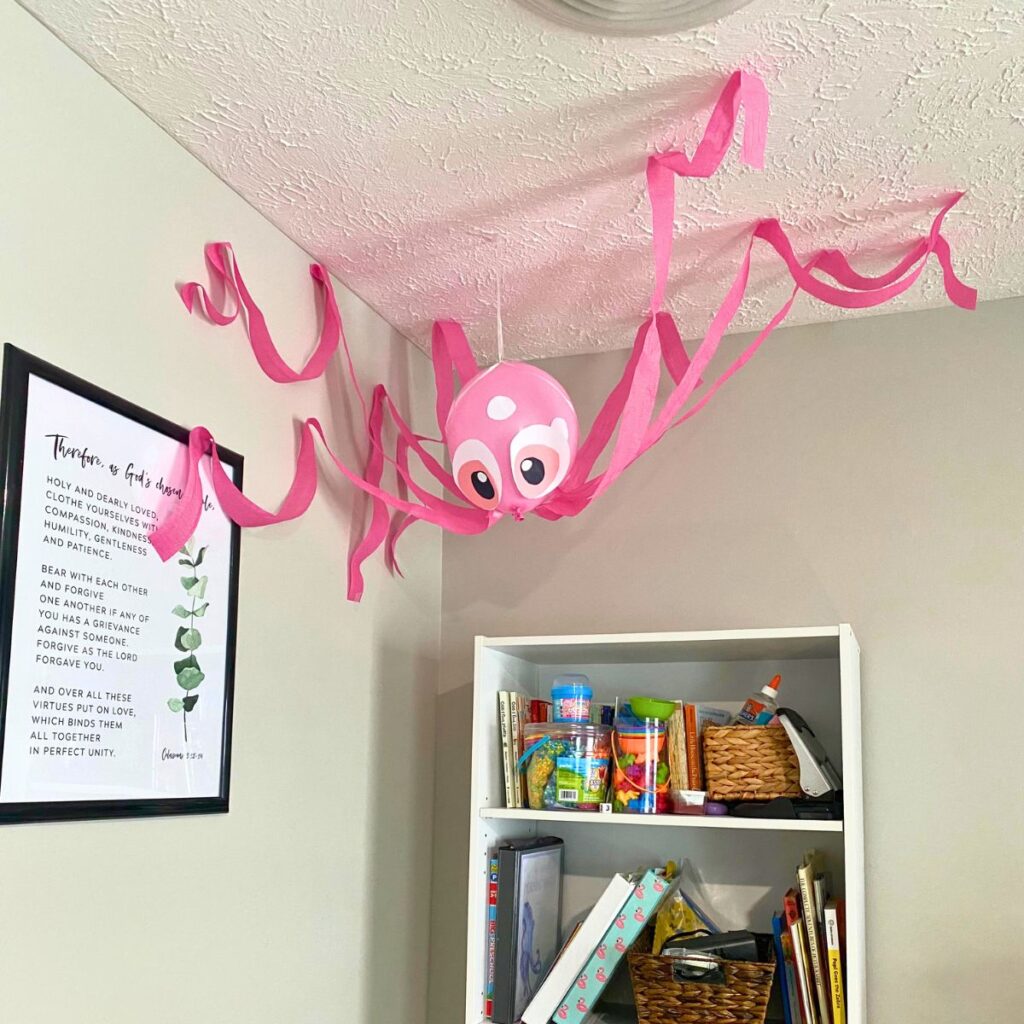
- Break up the mundane routine by allowing the kids to pick a theme and decorate the house (leave up for a week or however long it takes to muster the energy to take it back down again. No one’s judging here!). My kids recently chose an underwater theme so I made our cute little octopus buddy for us to enjoy while we sat at the kitchen table for meals and homeschool. The kids really enjoyed helping make the eyes and polka dots
- Budget-friendly and low-waste crafts for kids could include creating bird (even chicken!) feeders with toilet paper rolls or pinecones, peanut butter, and seeds or other fun treats. We also use the leftover paper rolls to make trumpets, outfitted with stickers and drawings, and have a marching parade around the house
- Include your kids in your kitchen projects. My kids love to help me peel garlic, make homemade granola, scramble eggs for breakfast, and practice their knife skills with plastic kitchen knives
- Send your kids outside with a bucket and a shovel. You will be absolutely amazed with what they come up with. My five and two year olds created a chocolate river and pretended they were in Willy Wonka’s chocolate factory after reading the book last summer. They also like to dig holes, plant rocks and other objects, and create dust baths for our free range chickens
- Teach them how to roll down a hill, what different soil feels like, how to create a dandelion crown, and simply spend time in nature, exploring the beautiful earth we’ve been gifted
- Have a picnic. It does not have to be outside. It does not have to include real food. It could also be a fun way to substitute the mundane lunch routine by simply eating cheese and crackers under the kitchen table
- Let each child pick their favorite fruit or vegetable and try to grow it. Extremely budget-friendly if you already have access to the produce of their choice from your local farmers market, because then you can simply save the seeds!
- Learn a new skill together
- Make homemade bread, yeast or sourdough, and give them a bit to play with themselves as a natural play-dough substitute

If you are interested in more ideas, specifically during the winter season, check out my free list of 54 unique kids activities. I promise this is not a list you have seen before! These are all ways we personally entertain our kids during the winter and I know you will find something new for your family to enjoy.
Do you have other ways that you are introducing a more simple, healthy, and frugal way of living on your homestead? Share them with our City Folk Homestead community in the comments below! I can’t wait to hear what you all have come up with!
More Homemaking Content
Low Effort Tips for Homemaking with Young Kids

Leave a Reply